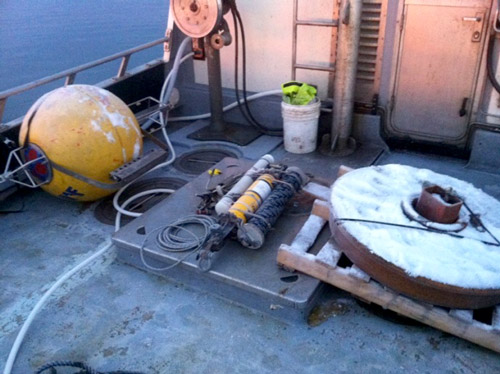ACEP at Work: Yakutat Wave Assessment Project Update

Project Description: Yakutat is a remote community located on the “Lost Coast” along the northeastern
Gulf of Alaska. Their current power generation is 100% from diesel fuel which must
be barged in, resulting in a high cost of electricity that averages $.60 per kilowatt
hour. The city and borough of Yakutat along with tribal leaders have been proactive
in identifying other options to meet their energy needs that are potentially less
expensive and more sustainable, including wave energy. Because the majority of wave
energy devices throughout the world are still in development or prototype stages and
since the energy potential of specific locations in the region is not well understood,
assessments of the available wave energy and environmental factors are necessary to
determine if the community would like to move forward with this emerging technology.
The first step in this assessment is to determine Yakutat’s wave energy resource.
In this phase, ACEP, funded by the City and Borough of Yakutat (CBY), deployed a bottom
-mounted mooring offshore of Yakutat to measure key parameters relevant to the placement
of an array of wave energy devices.
Dane Boysen (ARPA-E) gives seminar presentation at ACEP, ETF. Photo courtesy of Max
Frey, ACEP/UAF.
Uninterrupted power supply (UPS), photo courtesy of N.Konefal, ACEP/UAF.
Project Update: This week ACEP affiliate mooring technician David Leech (UAF-SFOS) was in Yakutat to retrieve data from the wave recorder mooring deployed off of nearby Cannon Beach. The simple oceanographic mooring, installed in August 2013, consists of a weight that anchors everything to the seafloor in about 40 meters of water. An acoustic release is placed in-line between the mooring point and a buoyant sphere that holds the instrumentation. After a month of waiting for a break in the wind and waves, David flew from Anchorage on Dec. 2nd, hopped onto CBY’s 20 ft. landing craft and motored out to the site of the mooring in flat calm conditions. The craft was piloted by Erv Grass. Since there is no sign of the mooring from the surface, David dropped an acoustic modem in the water and "pinged" the acoustic release to confirm the mooring's location (moorings often "walk" away from their original locations in high sea states) and then promptly sent the "release command.” Before the release was even able to "talk back", the mooring's top float was on the surface. The harbormaster, Erv Grass, motored over to the float and CBY Fisheries Biologist Bill Lucey and David had the float on board within minutes. The instruments were brought to CBY's lab where three months’ worth of wave and current data was retrieved for analysis. After replacing batteries and adding additional marine mammal recorders, the team re-deployed the mooring at the same location. Researchers will return in four months to retrieve additional data from the marine mammal recorders and wave sensor. In total, the moored instrumentation will collect data off of Cannon Beach for at least one year.
Project Lead: Jeremy Kasper, jlkasper@alaska.edu
Project Funding: City of Yakutat, Borough of Yakutat, Alaska Energy Authority
Photo Caption: Mooring on the way to be re-deployed.
Photo courtesy of David Leech, UAF.


